Written by Lorrie Reynolds
Categories
One of the popular agility methodologies puts a very high emphasis on Connection with your dog. They’re not wrong. Staying connected with your dog throughout an agility run can make it feel like the dog is reading your mind, one of the best experiences ever!
However, “connection” has been misinterpreted over the past couple of years to mean something that it shouldn’t.
Defining Connection in Dog Agility
Connection can mean a few different things. One meaning is specific to your relationship with your dog. You build a connection through engagement, fun, trust, and respect. It’s important to recognize that you have a “working” relationship with your dog that is specific to dog sports, and a “personal” relationship that is your everyday bond. I know a lot of people who excel at “working” or “personal” relationships but not both.
I’ll give you an example from my own dogs. Storm was my second agility dog. She and I had a great working relationship. We were (mostly) in sync on course, she loved to “work” and practice new skills, and was always willing to go, go, go for agility. Outside of agility, she was my daughter’s dog. If we weren’t playing agility and my daughter was around, that is who she would be with. Our relationship outside of dog sports was fine but it wasn’t as strong as our working relationship.
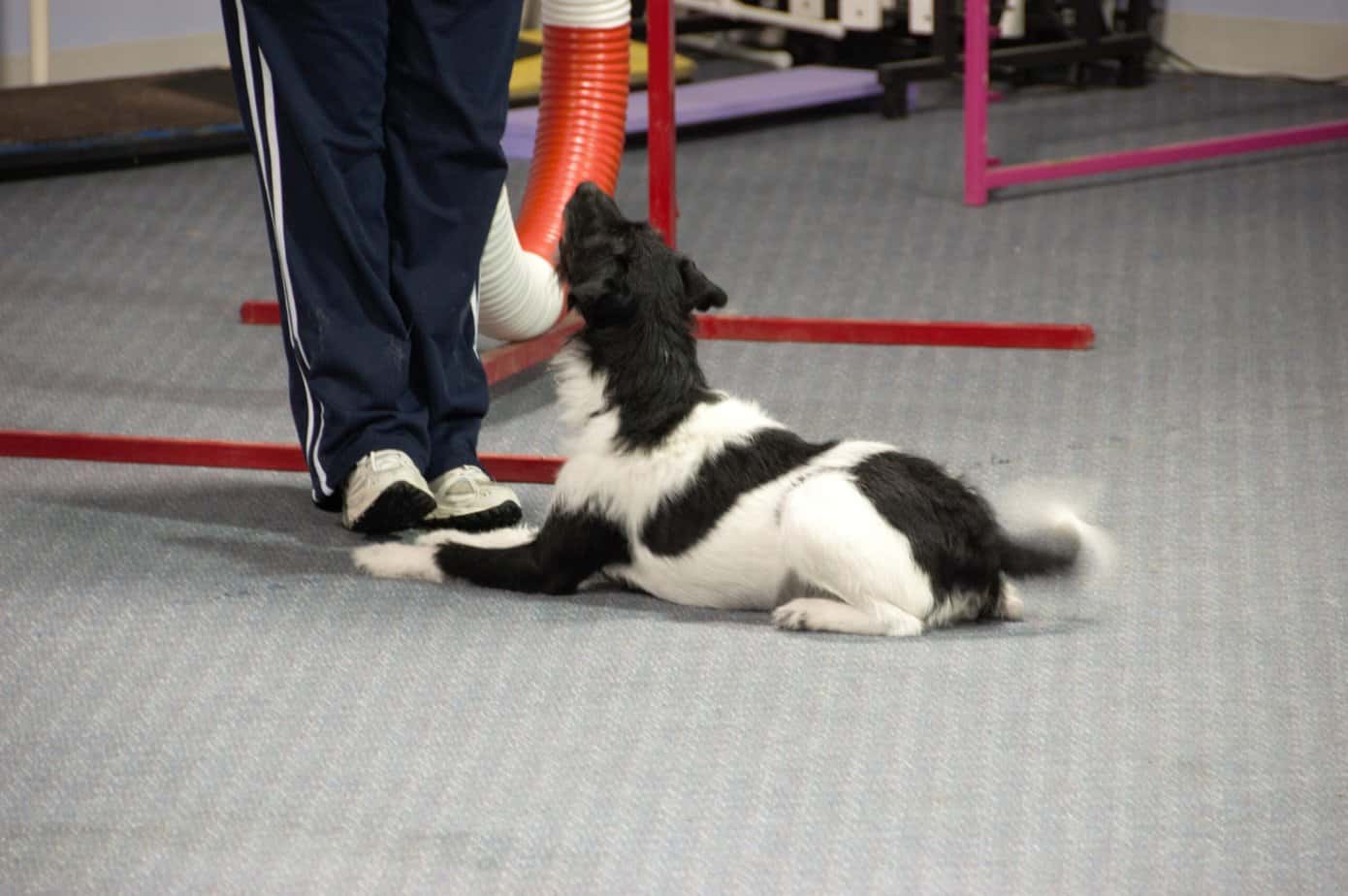
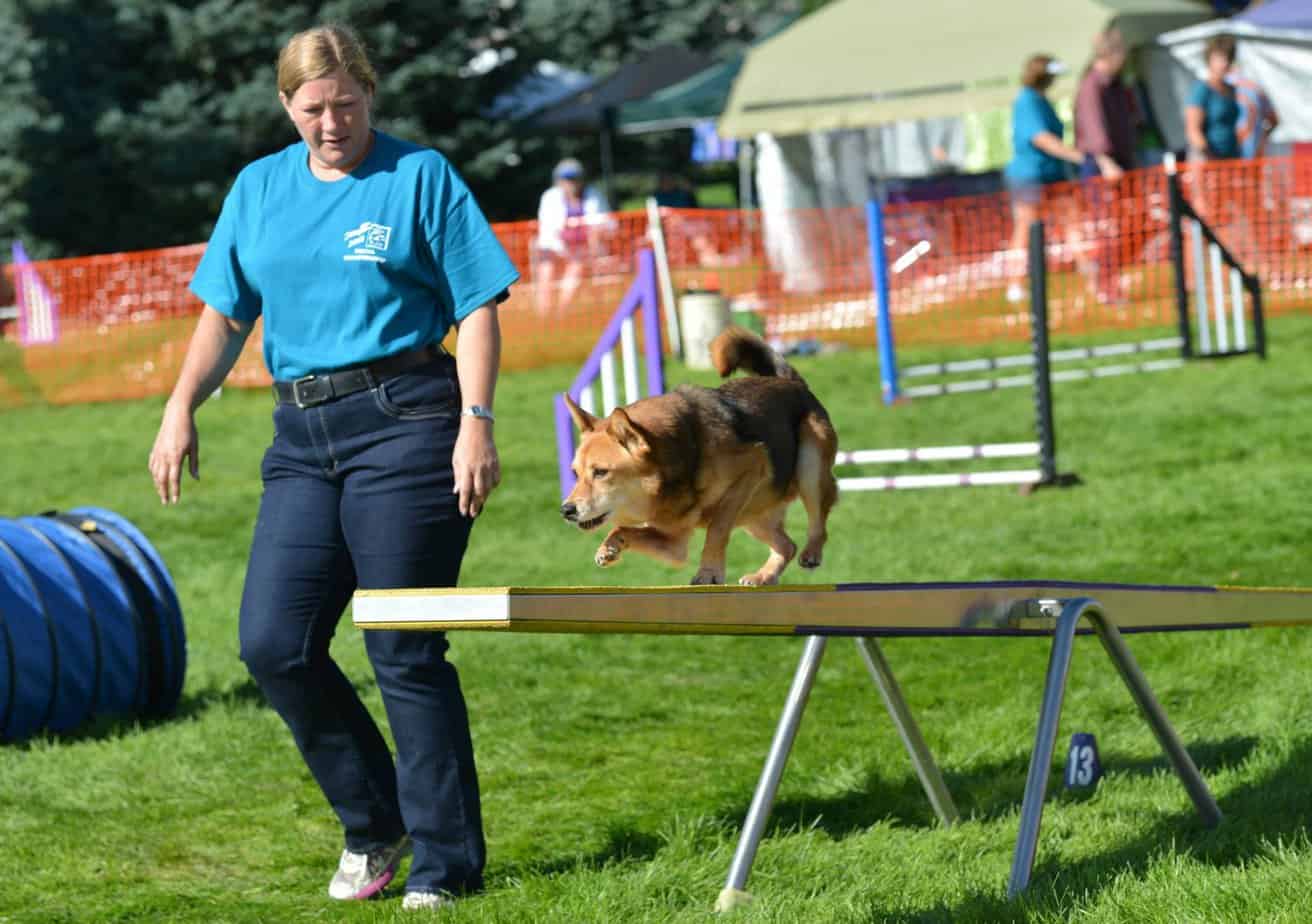
The second, but related meaning of connection is connection while you are actually running a course or working on an exercise. When you are connected, each half of the team knows exactly where the other is and what they are doing. When it is at its peak, the connection on course is magical and feels like mind reading. I’ve had those connected runs at a distance with both Maxx and Pixie, and they are the ones I remember the best.
A third phrase that is used in agility is “connect with your dog”. This is a specific behavior during a run. If your dog is running through a tunnel, you want to briefly make eye contact as they exit, to make sure you are both on the same page about what comes next. If there is a discrimination and you need your dog to come in, connecting for a moment can ensure that your dog comes in and is reading your cues. This is different from “being connected” as you run, which should be constant and includes your dog seeing the side of your face/eyes and you maintaining awareness of him in your peripheral vision.
The Connection Myth
Connection is NOT maintaining full eye contact with your dog around the entire course. Unfortunately, over the past several years, “connect with your dog” has been misinterpreted.
In my last few seminars before COVID, there were a number of teams who were really struggling with running a course because they were maintaining full eye contact with their dogs around the entire course. When the two team members are staring at each other, the dog doesn’t even see the obstacles that he should be taking.
If you think about teaching heeling, we encourage our dog to stare at our face and maintain position right next to us. Eye contact is a wonderful tool for keeping them close. However, on the agility field, we need to look where we want the dog to go.
You can easily see this in action with a simple exercise. Set the dog up a few feet in front of a jump. Maintain constant eye contact, and give him his release word. Chances are high that the dog gets up from his stationary position, but doesn’t go anywhere. You maintaining eye contact doesn’t give him any cues to understand what you want.
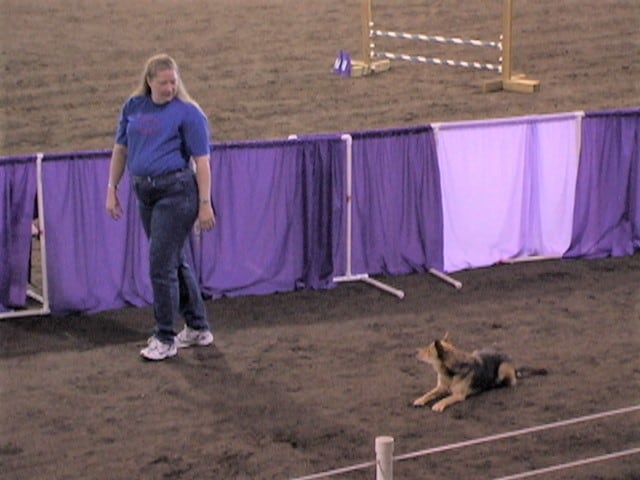
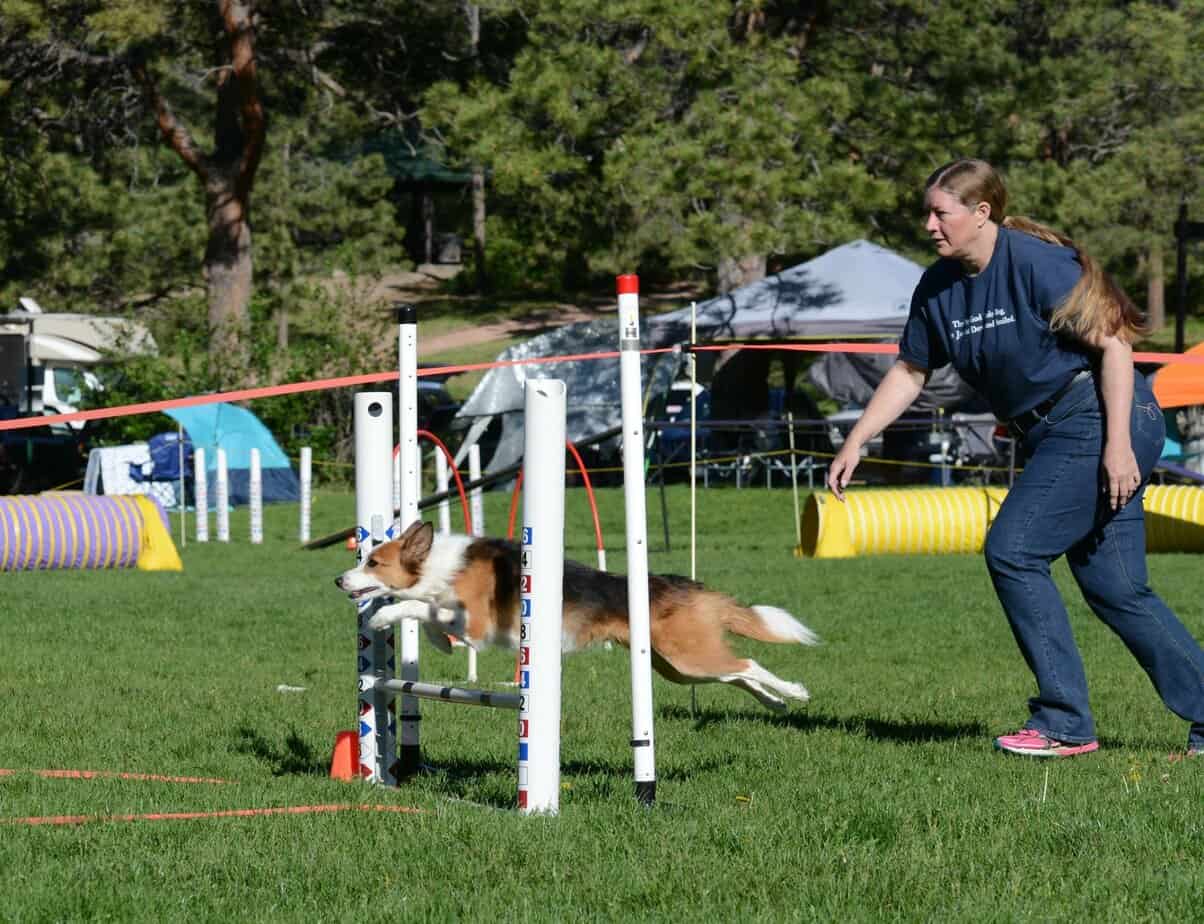
Set your dog up the same way, but when you release him, look at the jump instead. If your dog has been taught independent obstacle performance, he should take the jump. The simple action of looking where you want him to go gives him the information he needs to take the jump. (It’s also the reason that if you worry about an off-course obstacle and look at it, you are likely to get it).
Today’s Dog Agility Training Tip
Build and maintain the “right” type of connection with your dog, and your agility runs will feel like well-rehearsed dances.
You Might Also Like…
Five Ways to Crush It at Your Next Dog Agility Seminar
Going to a dog agility training seminar? Check out these five tips to maximize your return on investment!
Read This Before Deciding on Your Agility Dog’s Contact Performance
Which contact performance, running or stopped, is right for your team? The answer might surprise you.
Is Your Agility Dog a Pinto or a Ferrari?
If you’ve moved up from a slow or moderately-fast agility dog to a speed racer, here’s some advice to make your life easier.
Get tips, stories, discounts, and early notification of events and new courses delivered straight to your inbox! Join the community!
Cover photo: Courtesy of Stover Photography
First photo: Personal photo
Second photo: Courtesy of Dog Agility Photos for Fun
Third photo: Personal photo
Fourth photo: Courtesy of Dog Agility Photos for Fun
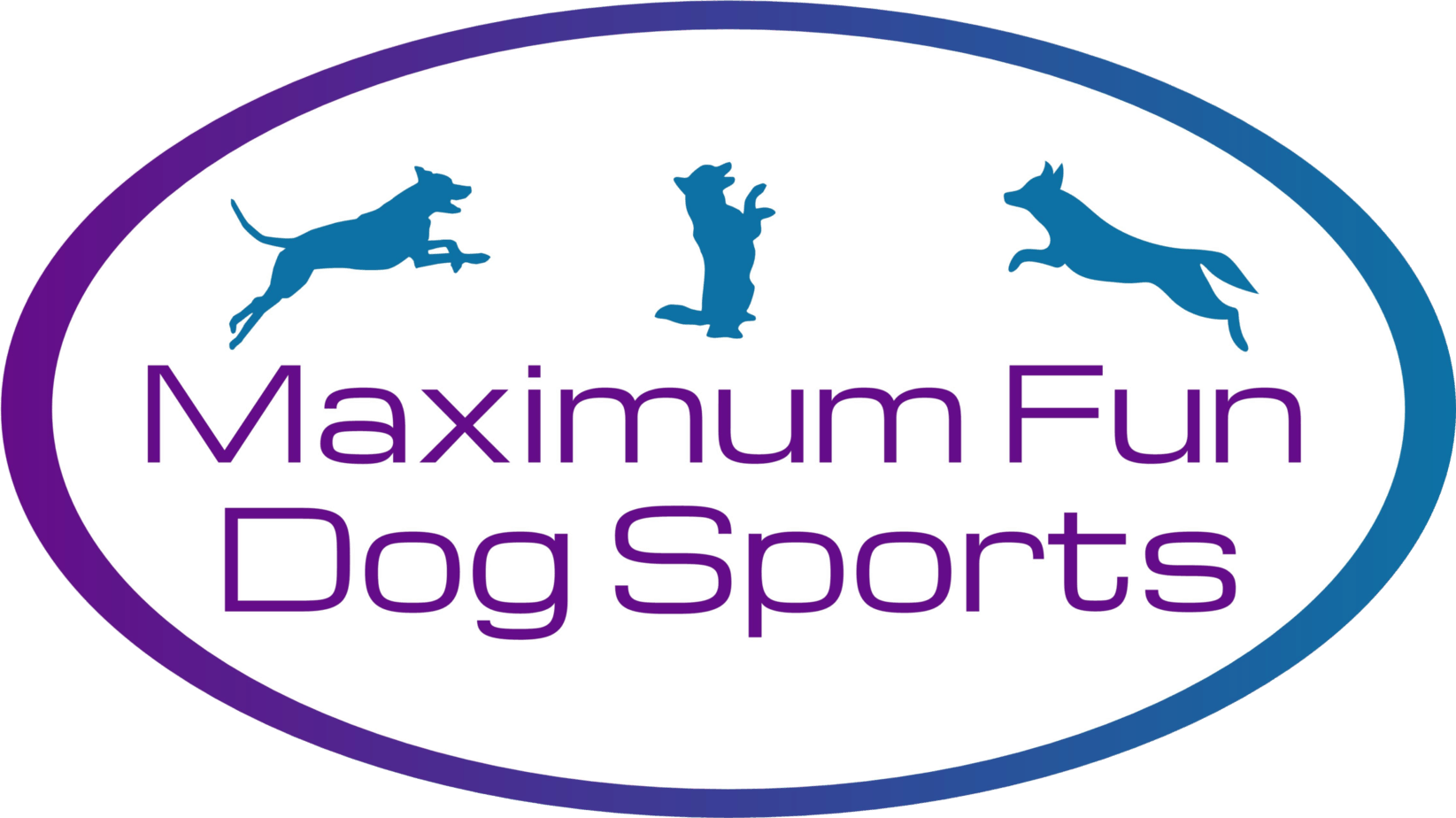
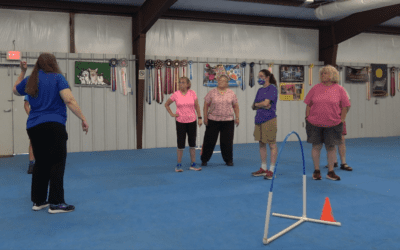
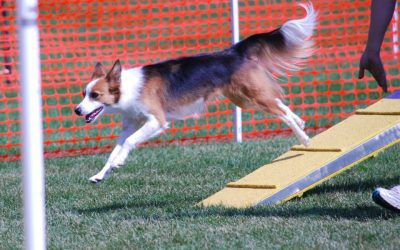
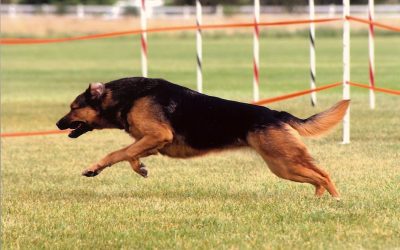
0 Comments